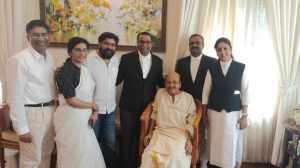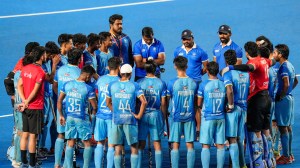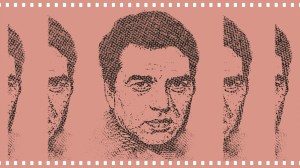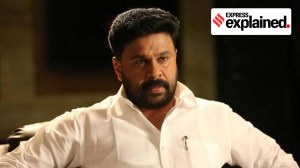Musharraf at Agra Summit: What was his ‘four-point formula’ on Kashmir issue?
Though there was some forward movement on the first day of the summit, the talks soon hit a roadblock. India was not happy with the Pakistan President’s commitment to stopping cross-border terrorism.
 In this Sunday, July 15, 2001 file photo, Pakistan's then President Pervez Musharraf being received by then Prime Minister Atal Bihari Vajpyee in Agra. Musharraf passed away on Sunday, Feb. 5, 2023, due to prolonged illness. (PTI Photo)
In this Sunday, July 15, 2001 file photo, Pakistan's then President Pervez Musharraf being received by then Prime Minister Atal Bihari Vajpyee in Agra. Musharraf passed away on Sunday, Feb. 5, 2023, due to prolonged illness. (PTI Photo) Former Pakistan President General Pervez Musharraf’s visit to India for the Agra summit in July 2001 is considered one of the most important meetings between Indian and Pakistani leaders in recent history. According to Pakistani media reports, Musharraf died in Dubai on Sunday.
Musharraf, who had ousted Prime Minister Nawaz Sharif in 1999, was invited to India for the summit, which took place between July 14 and 16, 2001. The visit started with Musharraf’s Delhi visit that was about ceremonies and optics.
After his arrival in Delhi, he was given the ceremonial welcome with a 21-gun salute. He was then formally welcomed by President KR Narayanan. Musharraf visited the Mahatma Gandhi memorial at Rajghat, where he laid a wreath and paid tribute. He also had a meeting with a person who used to work at his old home in Delhi. Musharraf’s family was from Delhi and moved to Pakistan after Partition.
The Pakistan President also held a meeting with Kashmiri separatist leaders, to which Delhi made its displeasure known.
 Musharraf and his wife Sehba pose in front of the Taj Mahal in Agra, July 15, 2001. (AP, file)
Musharraf and his wife Sehba pose in front of the Taj Mahal in Agra, July 15, 2001. (AP, file)
The following day, Musharraf travelled to Agra for the summit with Prime Minister Atal Bihari Vajpayee. There was some forward movement on the first day. At a 90-minute one-on-one session, the two leaders discussed the Kashmir issue, cross-border terrorism, nuclear risk reduction, the release of prisoners of war, and commercial ties. While they did not divulge the details, both sides maintained that the discussions were constructive and a third round of talks was planned for the following day.
During his stay, Musharraf visited the Taj Mahal and attended a dinner hosted by the governor of Uttar Pradesh.
According to several accounts, Musharraf proposed a “four-point solution” for the Kashmir dispute. It included the demilitarisation or phased withdrawal of troops and no change in the borders of Kashmir. The solution proposed that the people of Jammu & Kashmir will be allowed to move freely across the Line of Control (LoC) and also pushed for self-governance without independence and a joint supervision mechanism in Jammu and Kashmir involving India, Pakistan, and Kashmir.
But, India was not happy with Musharraf’s commitment to stopping cross-border terrorism. There were incidents of cross-border terrorism during those days of the talks as well.
Vajpayee refused to include a reference to Kashmir in a joint declaration after the summit. The talks failed and there was no joint statement. But, the two sides agreed to meet at different levels.
- 01
- 02
- 03
- 04
- 05































